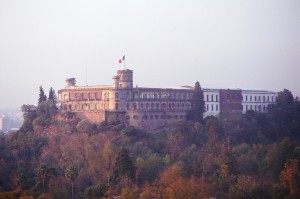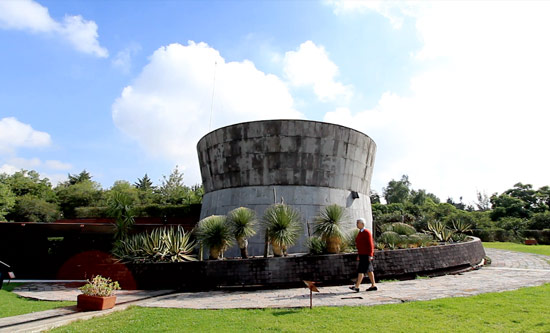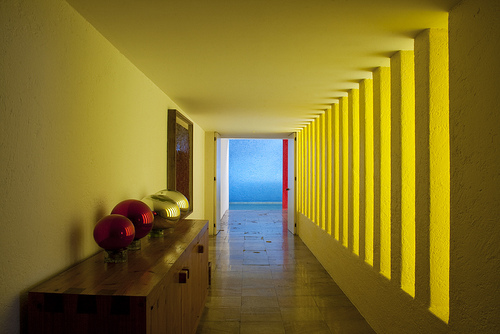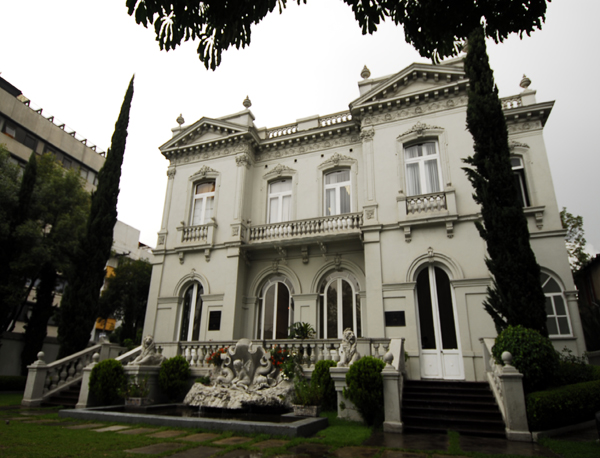San Miguel Chapultepec is one of the hot and happening – though much less well known neighborhoods near the center of Mexico City. Located across from Bosque de Chapultepec, one of the largest city parks in the world it’s a mix of residential and retail shopping, with plenty of charm mixed in for good luck. The most famous attraction is the Chapultepec Castle. Its rich history and architecture makes this palace a must-see site. In recent years colonia San Miguel Chapultepec has become a residential artistic area, with a mix of tree-lined streets, art galleries, stately homes, old buildings, and cultural points of interest.
One of CDMX’s most famous art galleries is also in this neighborhood: the Kurimanzutto gallery, which exhibits the paintings, drawings, sculptures, and more, of 31 artists, both on a national and international level.
You may also visit Galería de Artes Mexicanos, which was the first gallery in the neighborhood, founded by Carolina and Inés Amor in 1940. The GAM not only displays the works of national figures, such as Rufino Tamayo and Frida Kahlo, but it promotes young artists. The art gallery is inside a building that was designed by Mexican architect, Andrés Casillas de Alba.
The Museo de Caracol is also a great option to spend the morning learning about the history of the country in an entertaining and interactive way. Miniature models of structures and attractive displays depict the victories, failures and losses, of Mexico. Occasionally even workshops, concerts, and speeches are hosted in this museum.
Amor Casero, on General Juan Cano, is a wonderful ice cream parlor and one of the best in Mexico City. It sells novelty ice creams, using 100% natural Mexican ingredients. The parlor has its own garden, the perfect place to relax and enjoy an ice cream in the afternoon or early evening.
Sal y Dulce, located on Gregorio V. Gelati, is a pretty café that serves original gastronomic creations. They offer a wonderful breakfast menu, including typical eggs, fresh fruits and authentic sweet bread. For lunch, again there are many options, from light snacks to more filling dishes such as lasagna or a chicken curry.
Mercado El Chorrito, easily accessed from the Constituyentes metro station, is a popular market, bustling with life and activity. You’ll find everything from fresh groceries, flowers and snacks, since there are many stalls and street vendors selling tacos, atole, enchiladas, tortillas and other traditional Mexican antojitos.
The Sanctuary ‘La Sabatina’, dates back to 1910, only recently became a parish in 1972. The works of art inside add to the parish’s magnificence, while the rays pour through its beautiful stained-glass windows. This parish makes for a peaceful resting place while you are discovering San Miguel Chapultepec.
La Casa del Tiempo is another addition to San Miguel Chapultepec’s collection of galleries. Humanities, literature and art are what thrive within this gallery, which offers free activities to explore them. Monthly screenings from the great classics to smaller independent films are shown.
Casa Gilardi
Built by Luis Barragán in 1976 this house is defined by its colors, textures, sequences and disposition of spaces, and the use of light across the different rooms in the houses creating luminous spaces. One of its amazing innovations is a pool in the living room combining solid and liquid elements. A pinch wall coming out of the water interacts with the geometrical shapes and forms generated by a special light that transforms the space throughout the day.
Location:
Centrally located, this neighborhood is east of Condesa, and is bordered by the Chapultepec Park on the north, Av. Chapultepec and Av. Constituyentes on the west, Av. Jalisco/José Vasconcelos on the east, and Av. Observatorio to the south.
Transportation:
Metro stations on the neighborhood’s border are Chapultepec, Juanacatlán on Line 1; Constituyentes de la Line 7 y Tacubaya de la 1, 7 y 9.
Metrobús Line 2 serves Eje 4 Sur until Tacubaya with stops at De La Salle, Parque Lira, Tacubaya and Antonio Maceo (corner of Jalisco).
EcoBici bikeshare bikes may be rented.
Colonia San Miguel Chapultepec dates back to the 16th century when the barrio of San Miguel Culhuacatzingo used to be a part of villa de Tacubaya; a land with scattered, humble houses and pieces of land where the batalla de Invasión Estadounidense was fought, in 1847.
In the beginnings of the 20th century, lands were there used to be haciendas were fractioned and eventually the whole Tacubaya zone went through a drastic transformation. Old houses owned by rich families were demolished and a new middle class society was born in what we call today colonia San Miguel Chapultepec.
Eating
- Café Zena (Protasio Tagle 66 A)
- El Mirador (Cantina – Av. Chapultepec 606)
- Hare Krishna (India/Vegetariana – Gob. Tiburcio Montiel 45)
- La Ventanita (Café – Rafael Rebollar 95)
- El Matador (Mexicana – Gobernador José Guadalupe Covarrubias 7)
Fêting
- Cantina del Bosque (José Vasconcelos 21)
- Van Rock Café (Av. Jalisco 145)
- Salón Bar Los Abetos (Avenida Jalisco 152)
- Cantina El Puerto de Veracruz (Av Revolución #10-B)
Santa Fe is one of those “new, new, new” areas in the west of Mexico City. So new that lots of Mexico City residents have never been there, and many of them will never go. But Santa Fe is, like all of Mexico City, loaded with history and curious facts that make it always worth looking into a little deeper.
During the long colonial period, the area was devoted to grazing animals and mining the relatively poor soil. The regions was divided into the towns of Santa Fe, Santa Lucia, San Mateo and San Pedro Tlaltenango Cuajimalpa. The villages were intersected by the Royal Road, New Spain’s first toll road that ran all the way to Toluca (and still does). Today it’s still known as the Vasco de Quiroga highway and the toll booth is still located in the nearby Contadero neighborhood.
Named in honor of the first bishop of Michoacan’s “Hospital of Santa Fe,” Vasco de Quiroga was that famous friar who taught different skills to the various peoples of Michoacan. He also started numerous hospitals that provided not only for the sick but for pilgrims and travelers.

Upon arriving in New Spain, Vasco de Quiroga took a look at the sorrowful state of things and got to work. Sent as a sort of a judge of the “Second Audiencia of Mexico,” which ruled from 1530 – 1534, he ended up founding both the Hospital and the Pueblo Santa Fe with his own money. Vasco de Quiroga’s believed primarily that charity would be the only way he could really make a difference. His attempt to redeem the fallen landscape led him to undertake no less than the founding of Thomas More’s Utopia, right here on Earth.
Within a few years, the hospital was itself called Pueblo Santa Fe, literally the “people of Santa Fe.” And after 1532, the project essentially took on a life of its own and began to expand to other congregations and to form similar hospitals and social charity projects wherever it went. Quiroga maintained control over nearly all of them and enforced a set of rules he’d written down himself.

Some of the rules still carry Quiroga’s idea of exactly how this was to translate into a Utopia on Earth. According to notes in the collection of the Institute of Historical Research of the University of Michoacan, “Parents should ensure the marriages of their children with daughters from other families in the same Pueblo-Hospital. Failing that the daughters of the poor from the same neighborhood could also be married.” Men were considered marriageable at fourteen, and women at twelve. In the extended family, all members were required to obey the eldest grandfather. Wives were to obey husbands, and children were to serve and obey parents, grandparents and great-grandparents. Any need for servants from outside the family was to be avoided.
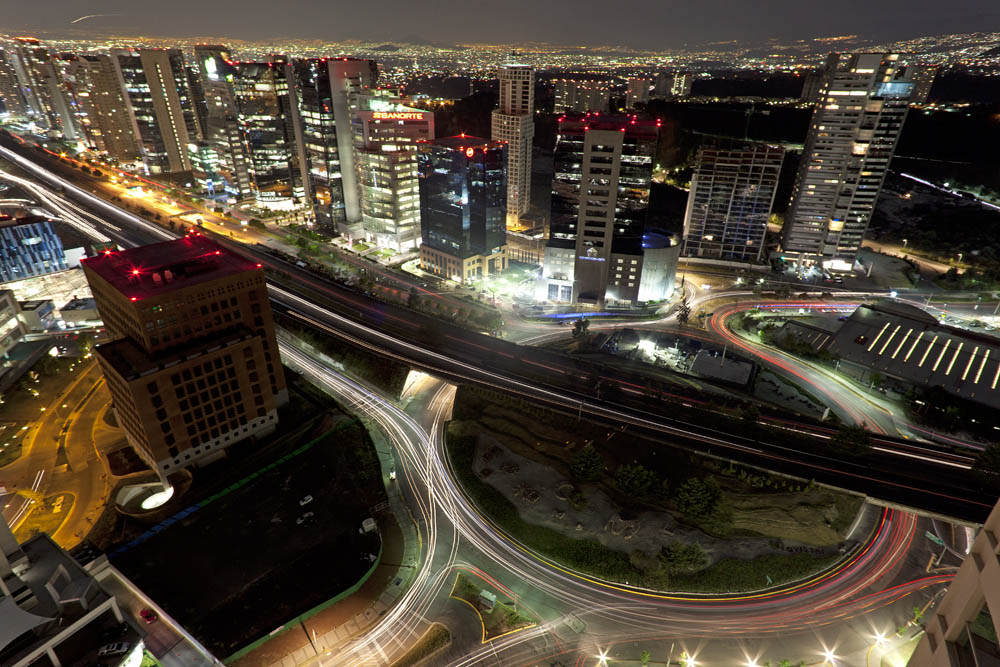
Santa Fe is said to be the remnant of that famous Utopian village. The ostentatious city of today grew up from the ashes of that early attempt at a perfect society. And though many Chilangos will still find it hard to believe, something of that hope and vision is likely still evident in the towers and underpasses that stand there today.
